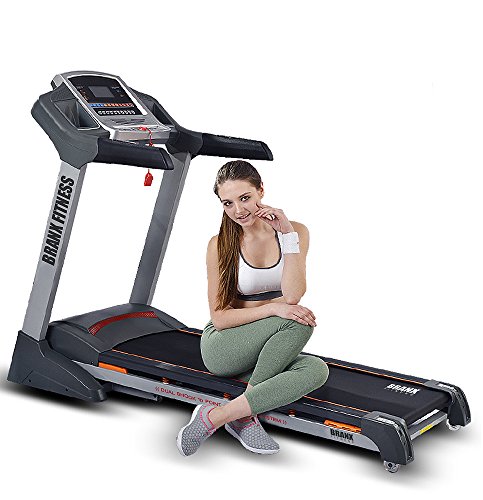Non-Electric Walking Pads: The Future of At-Home Fitness
In the age of digitalization and automation, it might seem counterproductive to revert to a more conventional and mechanical method to physical fitness. Nevertheless, non-electric walking pads have actually become an increasing popular choice for individuals seeking a sustainable, uncomplicated alternative for preserving their physical health without relying on technology. In this article, we will check out the benefits, features, and considerations surrounding non-electric walking pads, eventually making the case for their place in modern fitness regimes.
What is a Non-Electric Walking Pad?
A non-electric walking pad is a by hand run treadmill that requires no power source besides the force created by the user's movement. These devices are developed to accommodate walking and jogging, making them ideal for both light exercises and more intense workouts-- while removing the need for electricity.
Key Features of Non-Electric Walking Pads
| Function | Description |
|---|---|
| Manual Operation | Relocations with the user's weight and motion. |
| Foldable Design | Easy to store and transfer. |
| Adjustable Incline | Enables users to personalize the workout strength. |
| Space-Efficient | Ideal for small home. |
| Toughness | Constructed with robust materials for longevity. |
| Inexpensive | Lower initial financial investment than electric designs. |
Advantages of Non-Electric Walking Pads
Non-electric walking pads come with a variety of benefits that make them a preferable choice for many physical fitness lovers. Here are some of the main benefits:
1. Eco-Friendly
Among the most engaging factors to select a non-electric walking pad is that it needs no electricity. In an age where environmental impact is a major issue, utilizing less energy adds to sustainability.
2. Cost-Effective
Non-electric walking pads are normally more economical to manufacture and purchase than their electric counterparts. They also get rid of ongoing electricity costs. For users searching for a budget friendly method to stay fit at home, this is a significant benefit.
3. Improved Stability and Safety
Given that non-electric walking pads normally have a lower speed, users have greater control over their rate. This makes them safer for those who might battle with balance or coordination, such as the elderly.
4. Low Maintenance
Manual walking pads need minimal maintenance compared to electric models, which may require routine maintenance and periodic part replacements. This dependability can be a plus for busy people.
5. Versatile Workouts
Lots of designs provide adjustable inclines that permit users to boost their exercises. Non Motorized Treadmill suggests that anyone can tailor their workout routine to fulfill their particular objectives, whether it's weight loss or endurance training.
Aspects to Consider Before Purchasing
| Factor | Description |
|---|---|
| Size | Guarantee it fits your designated exercise area. |
| Weight Capacity | Examine the optimum user weight to guarantee strength. |
| Incline Levels | Determine the number of incline levels ideal for your fitness goals. |
| Mobility | Examine how easy it is to move and keep. |
| Build Quality | Choose for resilient materials to ensure longevity. |
1. Size Matters
Before purchasing, consider where the walking pad will be used. Guarantee it fits easily in your intended area, permitting enough room for safe movement.
2. Know Your Weight Capacity
Many walking pads come with a particular weight limit. Make certain to verify that it can securely support your weight for prolonged usage.
3. Consider Incline Levels
If you plan part of your fitness routine around incline training, check out designs that offer multiple incline levels for varied intensity.
4. Evaluate Portability
If you have actually restricted space, look for foldable models that can be quickly saved away when not in use.
5. Concentrate On Build Quality
A sound walking pad will lengthen the life of your equipment. Select designs with favorable user evaluates about sturdiness and quality.
Often Asked Questions
1. Are non-electric walking pads easy to utilize?
Yes, they are uncomplicated to operate-- you simply step onto the pad and start walking! The motion of walking produces the motion.
2. What is the weight limit for non-electric walking pads?
Weight limits differ by model, typically ranging from 200 to 350 pounds. Constantly check the requirements before acquiring.
3. Is it appropriate for people of any ages?
Normally, yes-- it is more secure for older adults due to its lower speed. However, as with any workout program, people need to speak with a doctor before beginning.
4. How does a non-electric walking pad compare to a conventional treadmill?
Although both serve comparable purposes, non-electric walking pads are more affordable, quieter, and energy-efficient. Traditional treadmills use advanced functions like digital display screens and preset exercise programs however come with higher costs and upkeep.
5. Can you work on a non-electric walking pad?
Yes, numerous designs permit for light jogging along with walking. Nevertheless, the experience may differ from electric treadmills, as users need to generate their motion.
Non-electric walking pads represent a useful, sustainable, and economical service for those aiming to stay active while minimizing their ecological footprint. With the ability to provide efficient exercises with low maintenance costs, these walking pads may just be the ideal suitable for individuals and households seeking a no-fuss approach to fitness.
As the marketplace for health and wellness continues to progress, non-electric walking pads are a suggestion that simple services can frequently offer a few of the very best results. Whether you are a newbie, an experienced fitness enthusiast, or somebody wanting to present routine movement into your way of life, purchasing a non-electric walking pad can be a wise and helpful option.

